This is a summary post for my keynote at the 13th Research and Innovation in Distance Education, and eLearning (RIDE) annual conference which takes place on 14 March 2019 in London. This year’s conference focuses on the themes ‘Professional development and student experience’ and my talk aims to consider these as challenges for digital education. You can access the full slide deck at https://go.alt.ac.uk/2EUioER.
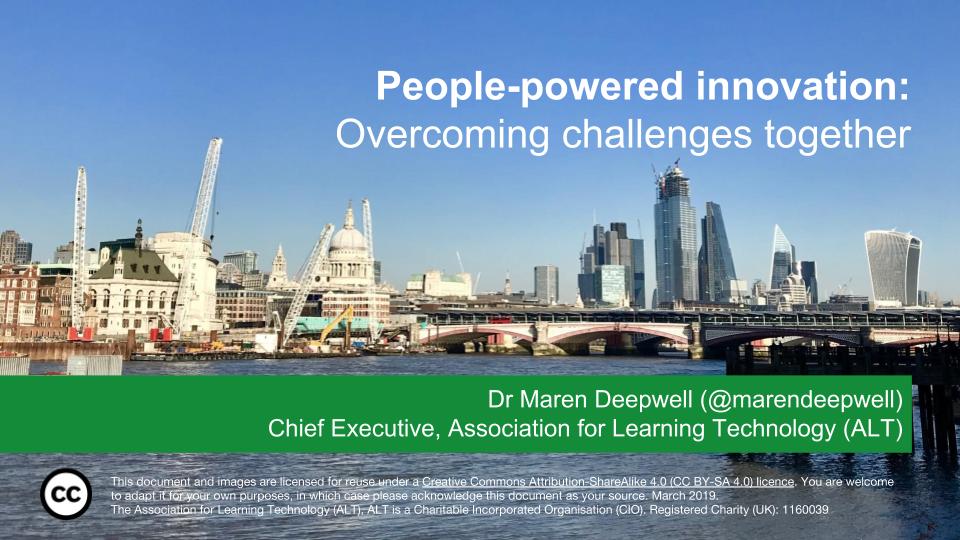
It’s a pleasure to talk to an audience with a long history of addressing the challenges of scaling up technology used for teaching, learning and assessment, familiar with what it takes to engage all learners and staff at scale and passionate about the potential that innovation has for distance education. I am particularly grateful for the warm welcome from Dr Mary Stiasny, Pro Vice-Chancellor (International) at the University of London and Professor Alan Tait, CDE Fellow and Professor Emeritus of Distance Education and DEvelopment at the Open University.
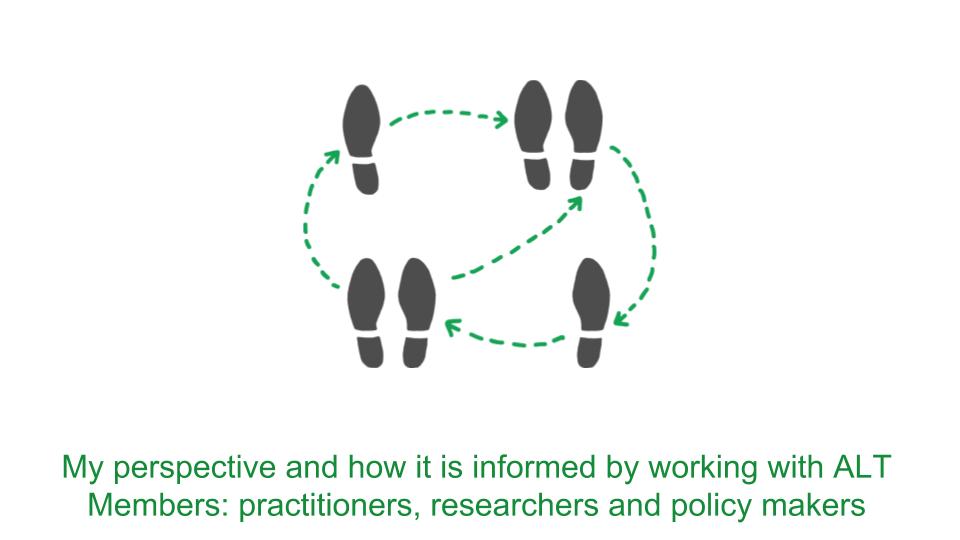
It’s particularly interesting to contribute to an event where the understanding of who learners are is more diverse, more nuanced than in a traditional undergraduate only context and where there is also a focus on understanding the the changing role of the distance learning practitioner. I chose the title for my talk because one of the key points I want to make is that change and innovation are people-powered, that it is human agency and drive that sets the pace of technological developments in education and beyond. It is easy to feel at times that we are at the mercy of technology, that it is the machines and technological progress that drive us forward and that we are constantly playing catch up. But we do have power to shape our paths, for institutions and individuals alike, and encourage each other to make use of it. To work together, across some of the traditional boundaries that can contain our practice in silos. With that in mind, here is an overview of what this talk covers in four parts:
- Critical context and the challenges technological innovation presents
- Insights into professional practice and trends in Learning Technology
- Professional recognition and accreditation fit for a fast moving landscape
- Promoting equality and working together to enhance the student experience
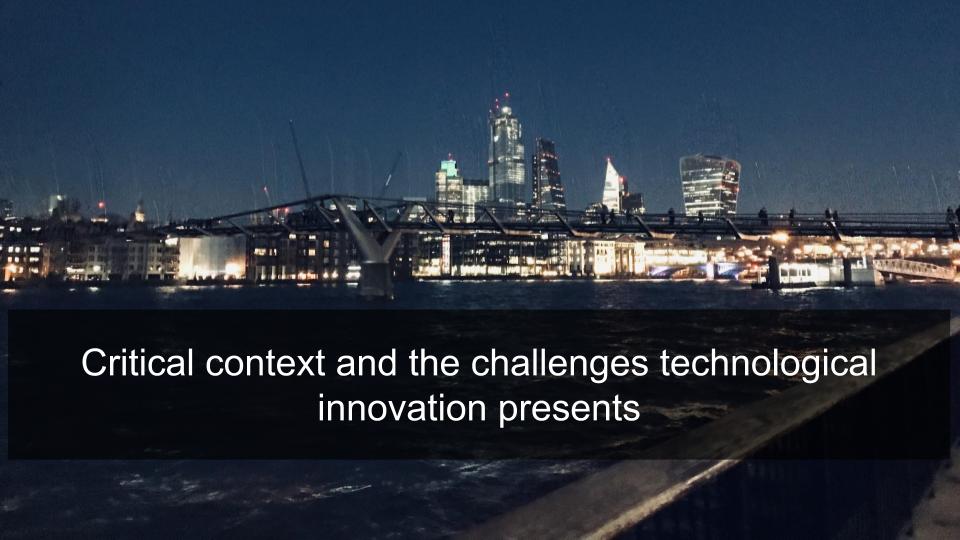
First, I’d like to briefly set out some of the critical context and look at examples of how what’s new in Learning Technology, what kinds of technologies we are currently seeing come into learning and teaching and what’s new on the horizon. It’s the interplay between learning and technology, how they effect each other to change our understanding and our practice, that is of particular interest.
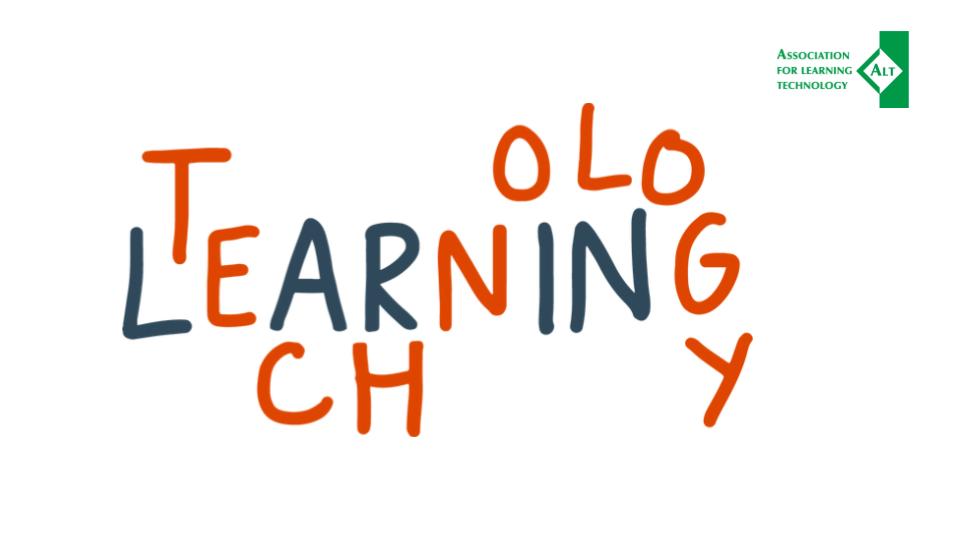
One of the areas of high priority identified across sectors is measuring learning, an interest in assessment and in a wide range of methods to quantify, track and chart all aspects of the learner experience. There is always a promise that with enough data and dashboards we can gain insights, leverage the power of learning analytics to understand more about how what we do impacts on progress, skills development and learning outcomes. It is up to us to develop our own capabilities in order to be able to understand fully how the more complex systems we use work, what determines when a ‘red flag’ goes up and how we should interpret and act on the information we gain in this manner. One of the last points I make in this part of the talk picks up on a section of the 2018 Horizon Report, which describes rethinking the role of educators not as a solvable or even a difficult challenge, but a wicked one, as ‘complex to define, much less address’. This is why I think the work that my organisation, the Association for Learning Technology, does is so important. We have been leading professionalisation in this context for over 25 years, charting the changing role of professionals across sectors, and these insights is what I will draw on in the next part:
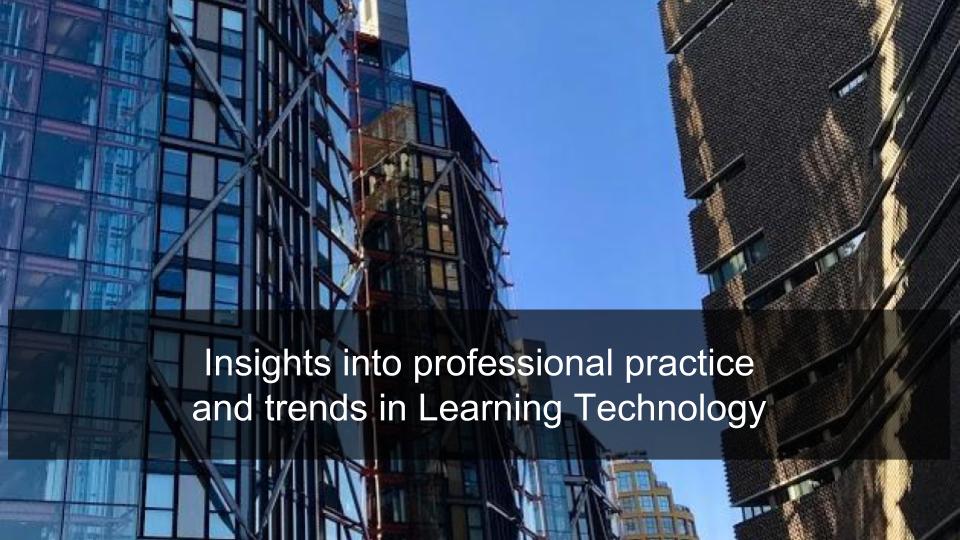
The main question I want to ask here, is how do we chart the changes in professional practice and what insights do we have. A good place to start to find answers is ALT’s Annual Survey, which in its current form has just been run for the 5th year. The survey is designed to enable us to understand current and future practice, show how Learning Technology is used across sectors and help map the ALT strategy to professional practice to better meet the needs of and represent our members. You can access the full report and all data openly, see https://go.alt.ac.uk/Survey2018 .
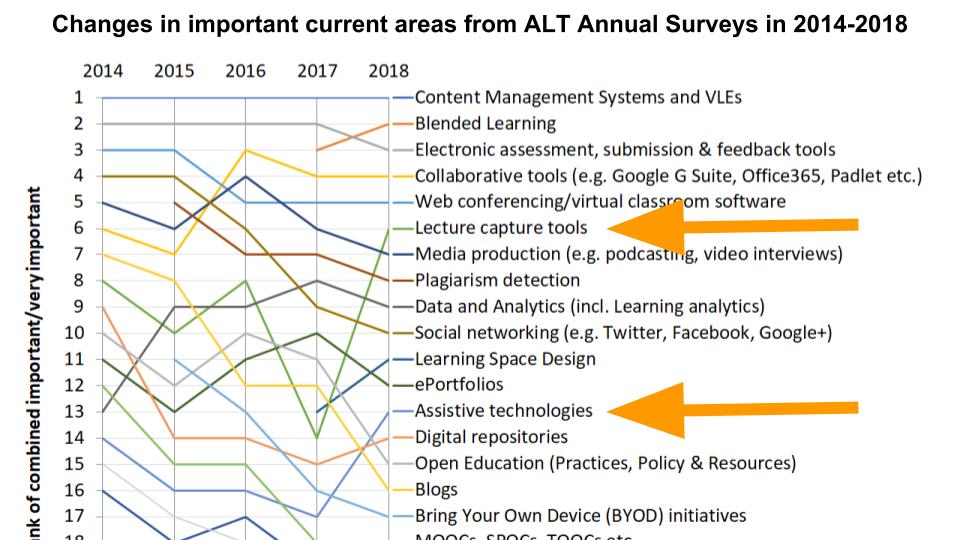
Over a period of 5 years, the survey shows how for example different areas in Learning Technology become more or less important. And one of the areas I have picked up for today specifically is Learning Technology related to assessment and also the student experience. Learner engagement has consistently been the most important enabler for the use of Learning Technology in all surveys over the past 5 years and underlines how central that is to what we do, how important people are to driving innovation and changing practice. We have that in common, no matter how different the institutions we work for, the projects we are involved with or the technologies we manage may be.

So from setting out the context of current developments in Learning Technology and the changing face of professional practice, I now want to come to talk about professional recognition and accreditation fit for a fast moving landscape.
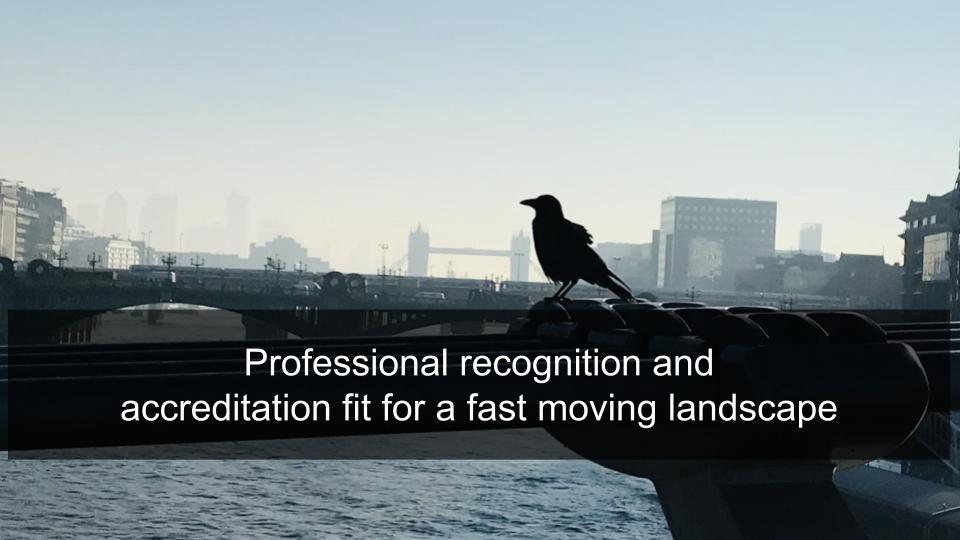
Established for over 10 years, the CMALT accreditation framework is the example I will focus on in this section. CMALT is a peer-based accreditation framework for all Learning Technology professionals and from the outset one of the key challenges it had to address was how to provide robust and high value professional accreditation in a context where practice changes rapidly and in which our definition of what ‘best practice’ looks like develops very quickly. One of the ways in which we solved this challenge was to set out, and to regularly revisit, shared principles that everyone, regardless of role, could relate to:
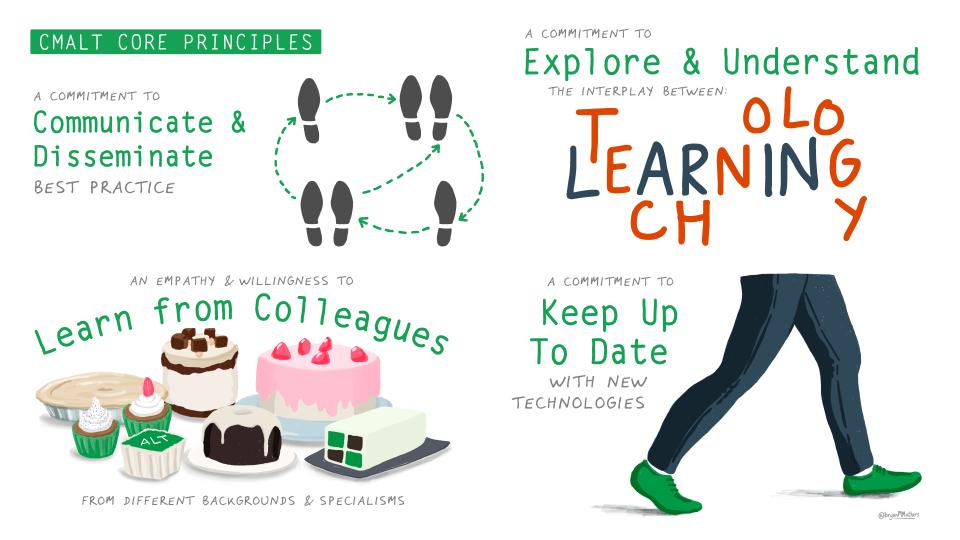
ALT’s definition of Learning Technologists is this:
You don’t have to be called a Learning Technologist to be one.
We define Learning Technology as the broad range of communication, information and related technologies that can be used to support learning, teaching and assessment.
Learning Technologists are people who are actively involved in understanding, managing, researching, supporting or enabling learning with the use of Learning Technology.
Delving deeper into what that means for professional recognition, I share examples of over a hundred different specialisms individuals have demonstrated their capability in since the scheme was launched, and specifically how specialist areas have developed in relation to engagement with learners and also how innovation has shaped the development of new specialisms. One of the areas of change that has really gained momentum is management and leadership and in particularly in the last few years we have seen increasingly senior roles, decision making roles, requiring a Learning Technology component or even focus. That is why we have piloted a new pathway for accreditation, Senior CMALT, which is due to launch in the coming months and from which I want to share some early findings.
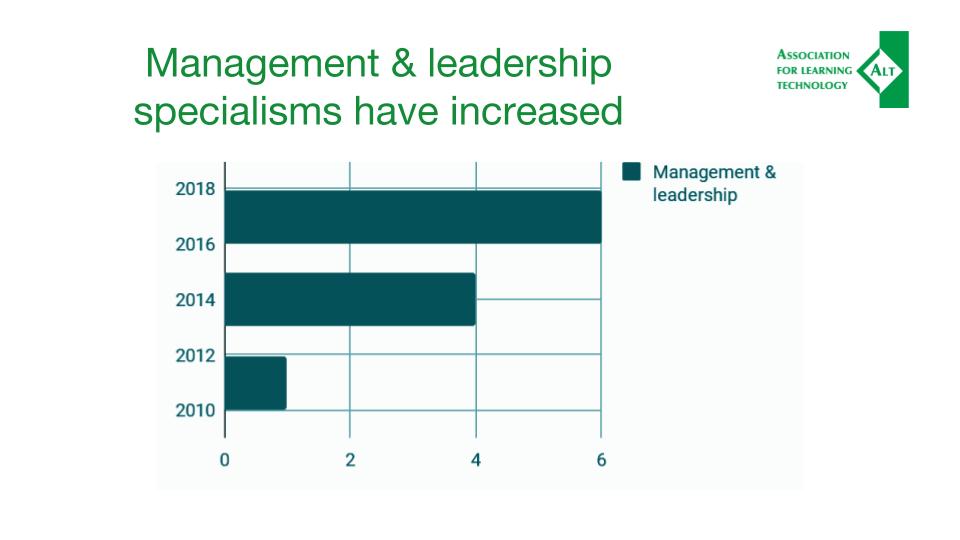
The new pathways continue to build an accreditation framework that empowers professionals to critically reflect on their practice and use of technology for teaching, learning and assessment. It provides robust, scalable recognition mapped to other national frameworks including the UKPSF, Jisc’s Digital Capability framework and Blended Learning Essentials. I took part in the pilot of the new senior pathway last year, and for my portfolio I chose to focus on an advanced area of practice about promoting equality in Learning Technology.
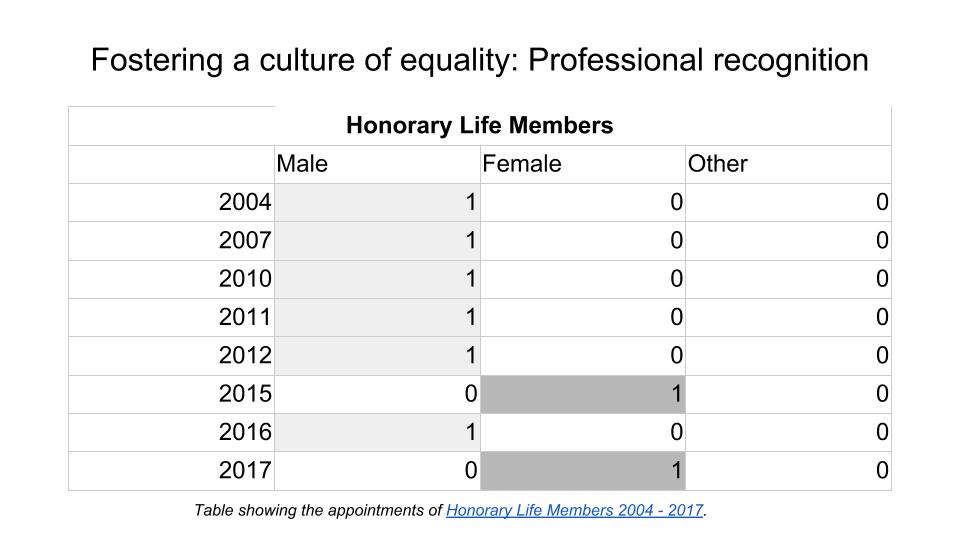
Some of the examples I share from my own portfolio include this, how the recognition of Honorary Life Members has changed over the past 15 years: focusing on gender balance since I become chief executive of ALT in 2012.
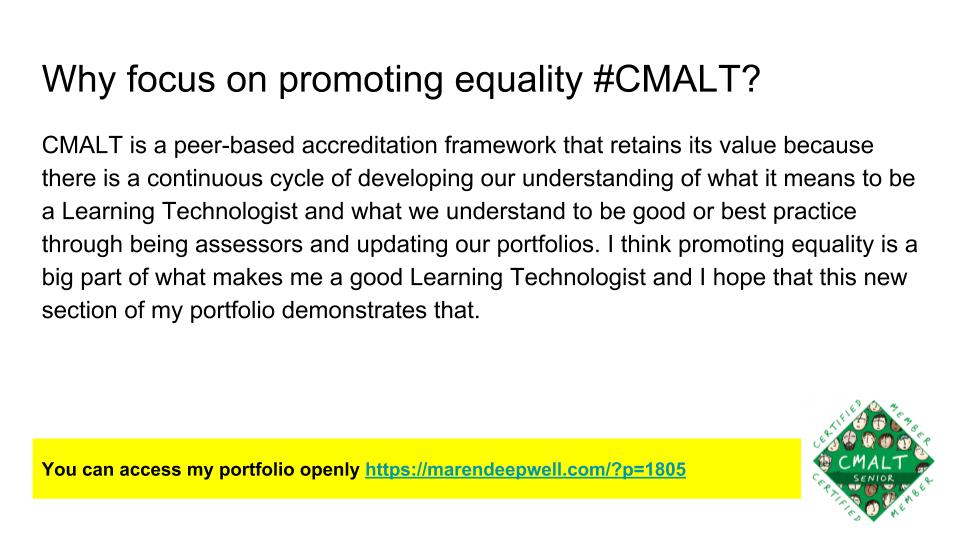
You can access my portfolio openly https://marendeepwell.com/?p=1805. Take a look for yourself and see how I approached the new pathway. And that brings me to the last part of my talk, which is about unpacking some of the challenges we are still facing when we work together and in particular the issue of gender equality in Learning Technology.

I chose to focus on this aspect for working together partly because gender inequality is rife in the tech sector as a whole and even shapes how new technologies are developed, the data sets that AIs are trained on and the vision of the future that we see presented to us with technology. It’s also a continuous issue in this country and many others across the globe, even if we hear again and again that greater equality and more diverse workforces perform more effectively and deliver many benefits for organisations. Much of this part of my talk builds on the analysis my colleague Martin Hawksey did of ALT’s Annual Survey, and I encourage you to read his related post. This was written for an event on International Women’s Day at the University of the Highlands and Islands and presents new insights into professional practice from a gendered perspective.
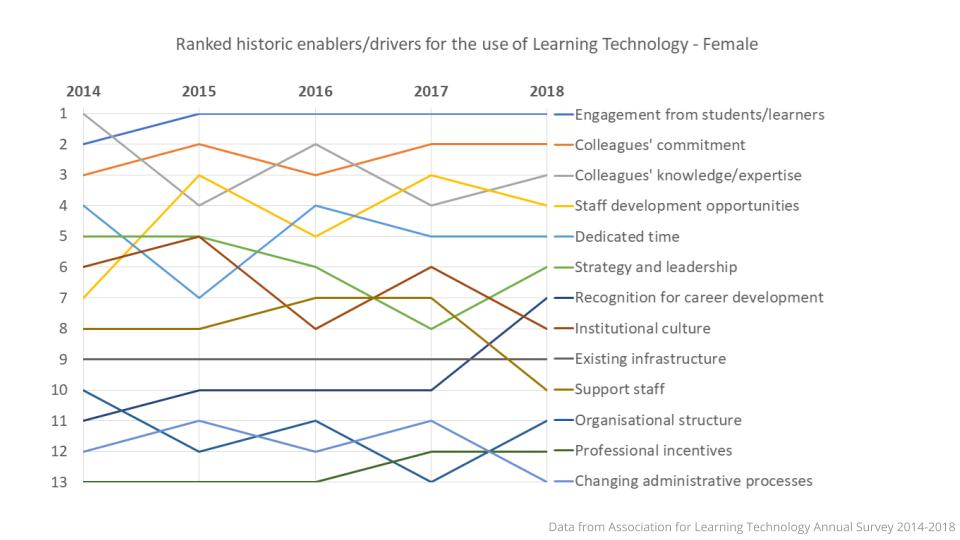
It’s interesting to see how the responses differ, particularly as we have a nearly even gender balance across all 5 years of data. So both in terms of what the areas of importance are in Learning Technology and also the enablers and drivers for the use of Learning Technology. This is the first time we have analysed the data from the survey in this way and it’s opening up new perspectives for our understanding of gender equality in our community.
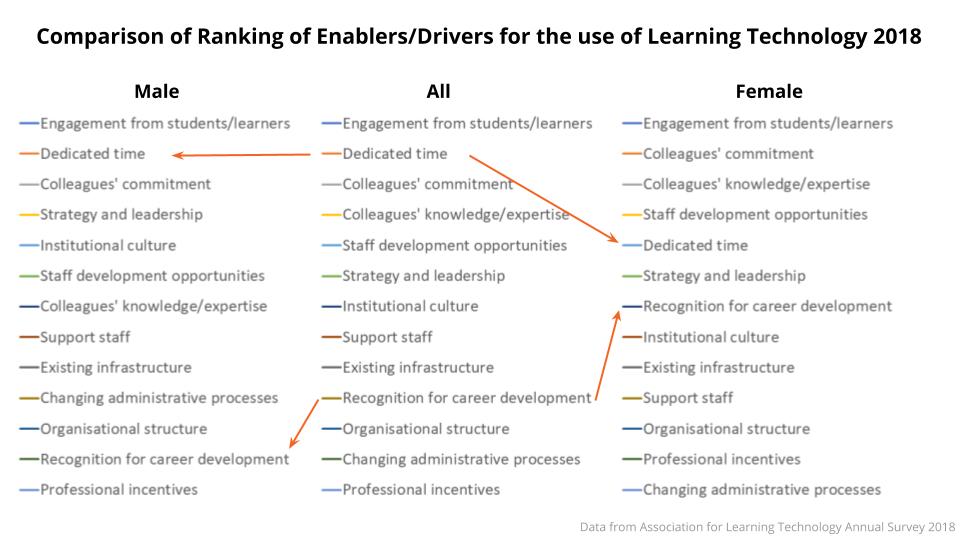
Coming back to one of the key themes of the conference, re-examining the role of long-distance educators, I would like to draw you attention to the part of the survey that charts the development of professional roles amongst respondents.
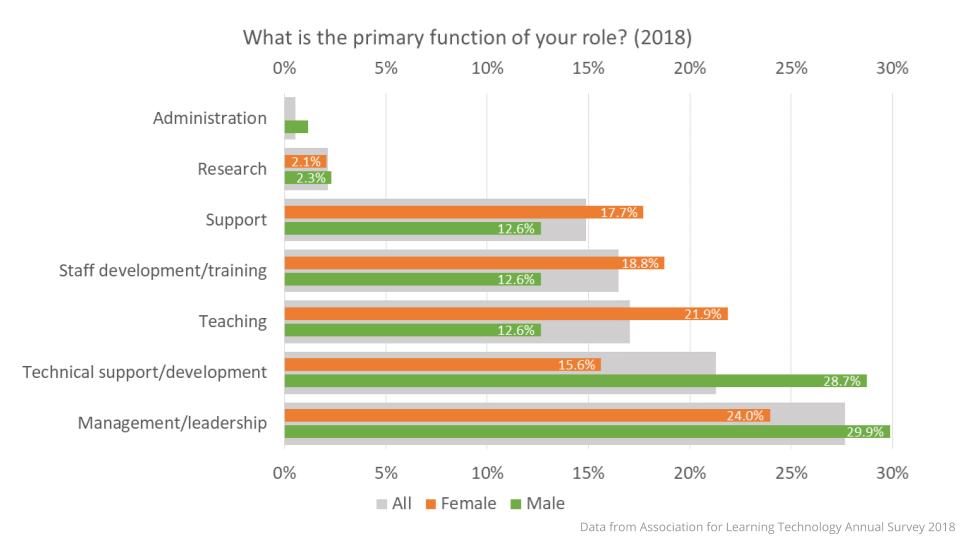
As a women in a senior leadership role in Learning Technology I am reminded every day that we still have a long way to go when it coa mes to gender equality, and the broader challenge of addressing the structural inequalities in our institutions, in national policies and also, in an ever more connected world, on a global scale. I feel this has particular relevance for distance education as at the heart of our endeavour is to provide greater access to education for all, to create greater equity for all learners and how we can use technology, in an informed and reflective way, to help us achieve those aims together with a focus on learners and staff leading innovation.

Thank you for reading and if you’d like to see the full keynote you can access the CC-licenced slide desk here https://go.alt.ac.uk/2EUioER and join the conversation #RIDE2019 on Twitter.